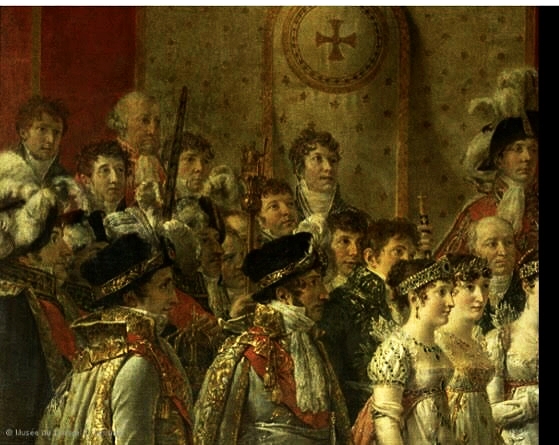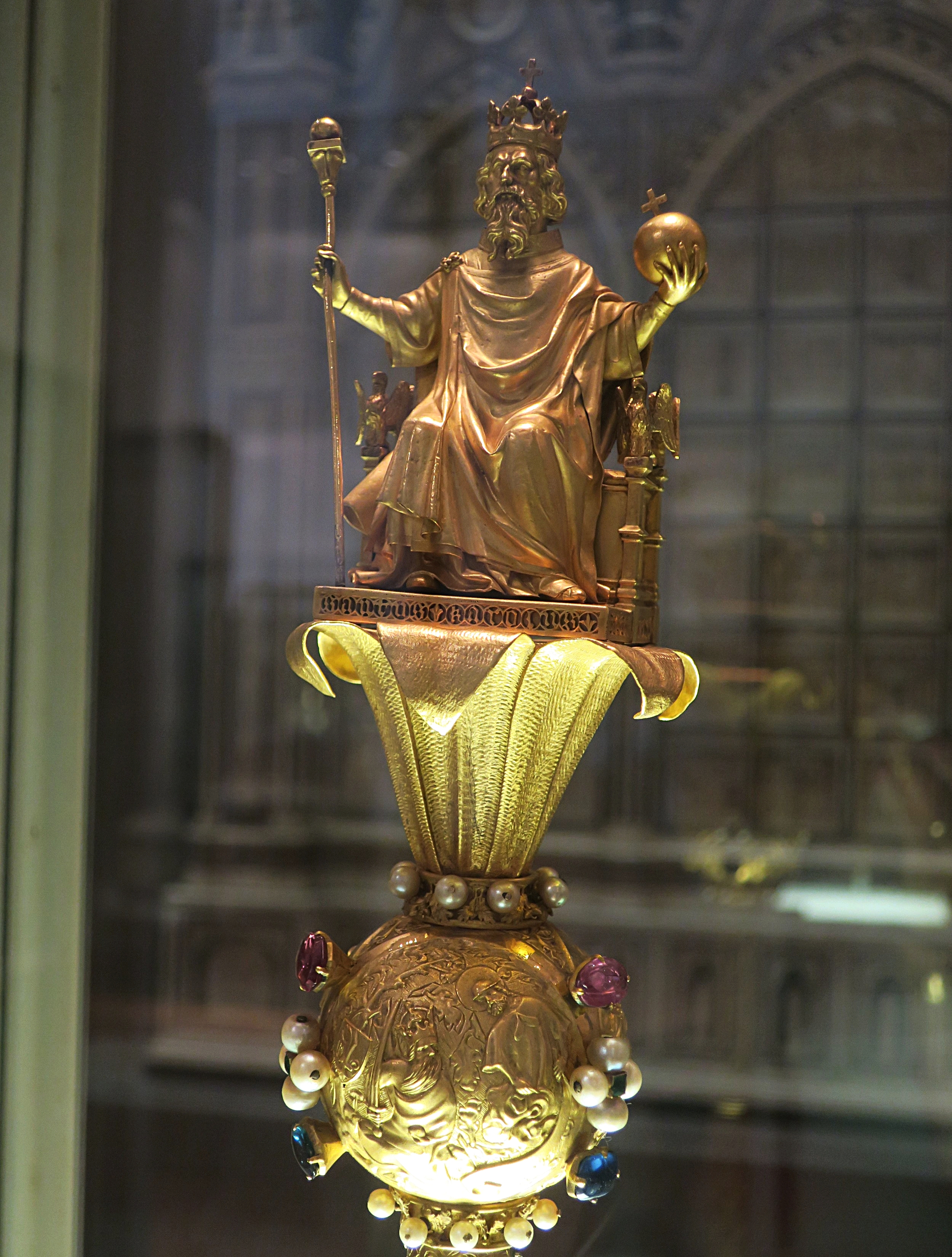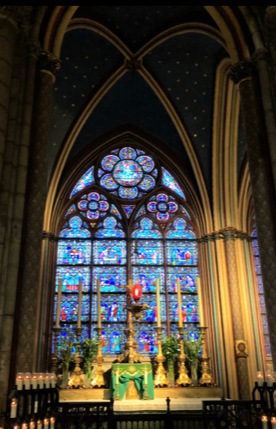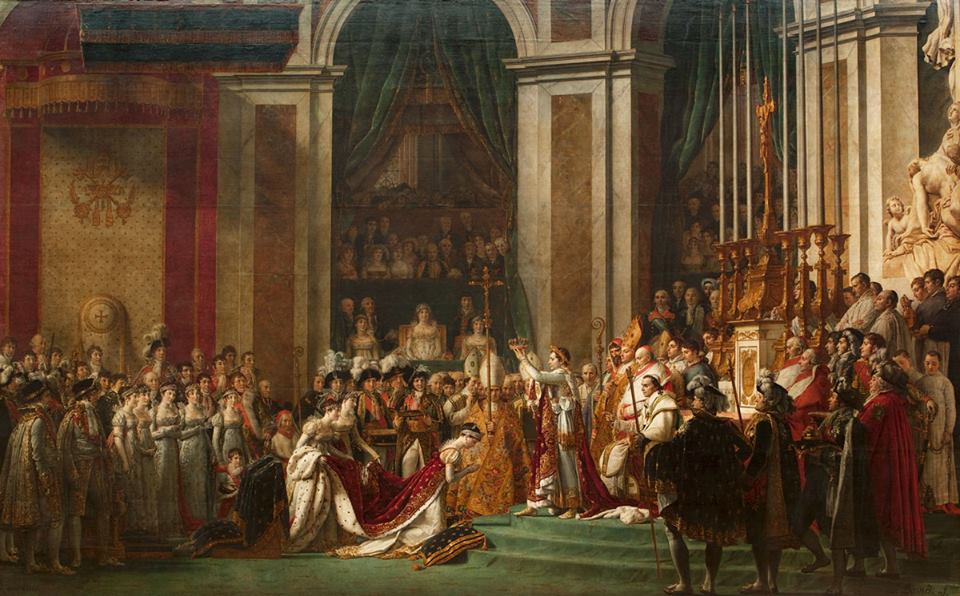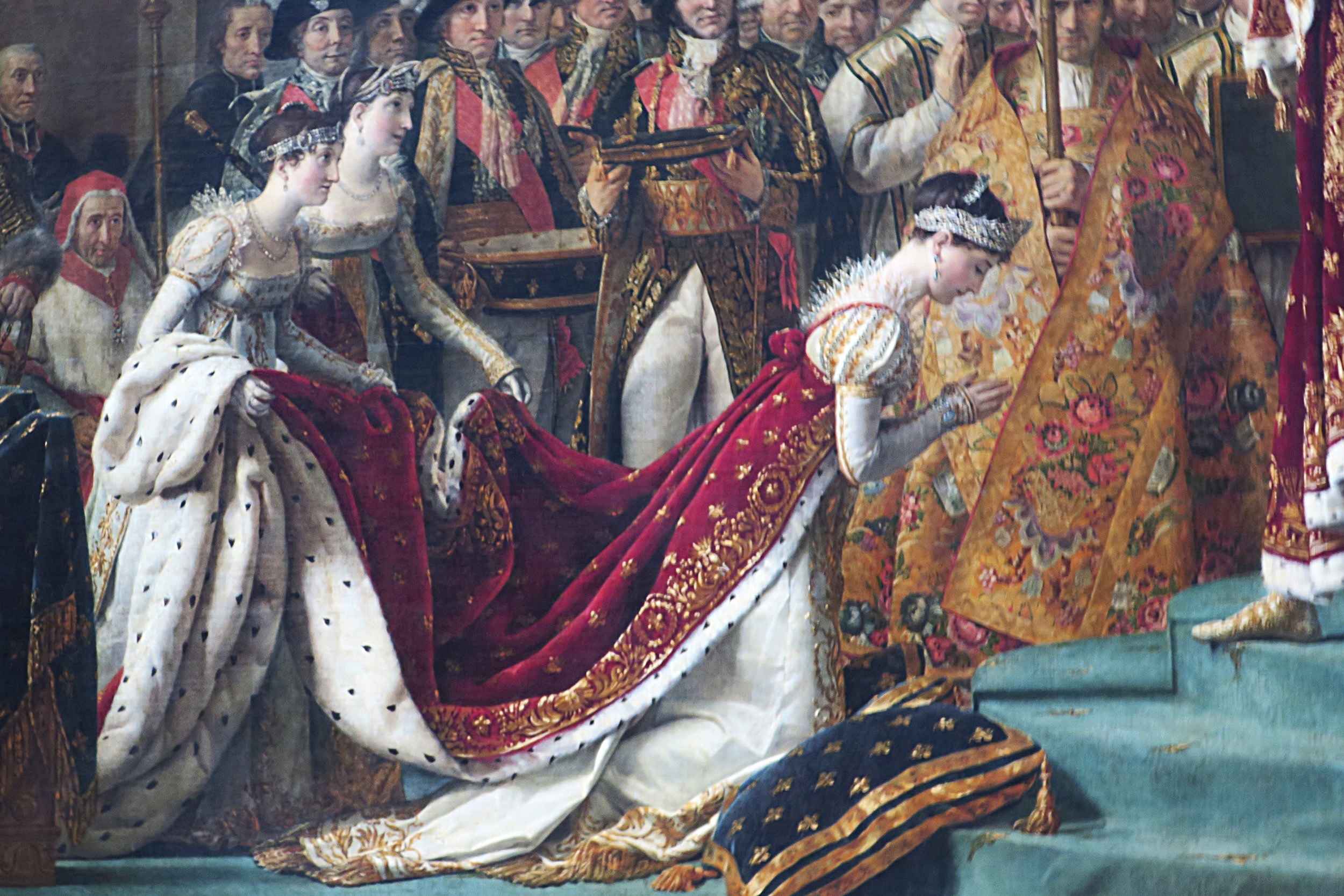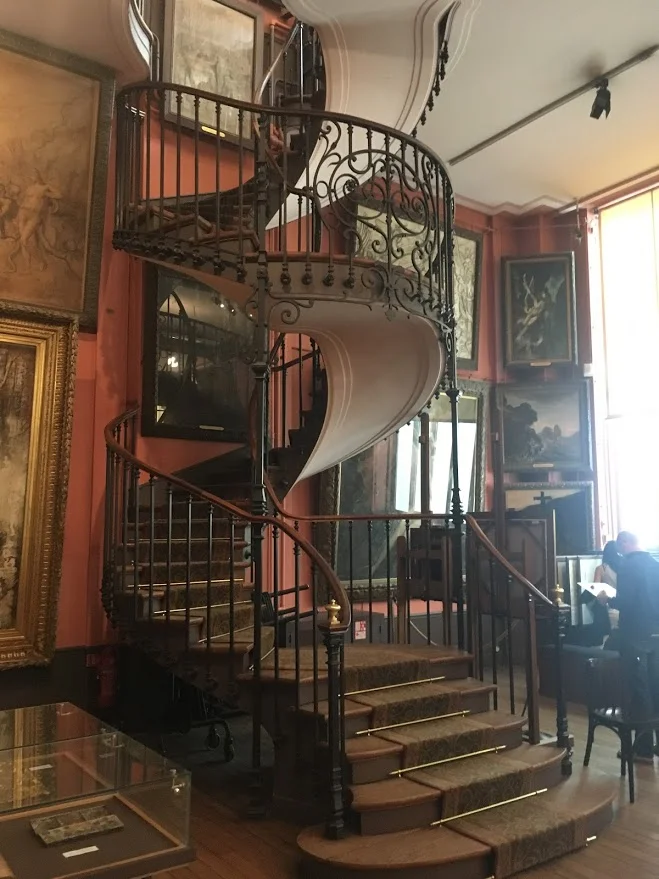I’m often asked where all the information about these wonderful tales I share of Paris come from. It’s hard to answer because I dig deep for some of the info online, in the libraries of Paris but mostly in the many books that fill my office. Many people go to Paris to shop the latest trends at the fancy boutiques on Rue Saint Honore, but I am happiest digging through the bouquinistes and the many bookstores in Paris to find the treasured pages of French history. Many days my walks back to my apartment are weighed down with the books I find in the Louvre bookstore convinced I couldn’t possibly leave without that huge book about the Sacre de Napoleon although I have yet to buy the large book I want so badly about Delacroix. I can show some restraint, but barely. Every trip I leave with an extra suitcase filled with books and also ship 2-3 boxes back. Once you master being able to read in French then the whole game takes a giant leap forward and why I leave with so many. However inside these treasures is where I find the answers to questions I have been dying to know and what makes me giddy with excitement every single time.
There are many lists out there of the favorite books about Paris and they all have the same titles on them every time, I may have one or two of those on here but this list is for all you lovers of Paris that want to dig deeper and learn just a little bit more. When I sat down to gather my favorite titles it was almost impossible to stop at only 5 or 6. So, I will break them out for you a bit over time, first up my favorite books I use for research and history of Paris books.
These first three books, all in French, I grab anytime I need to find out anything about a certain street or address. The first is Jean-Marie Cassagne’s Paris Dictionnaire du Nom des Rues. Every single street, square and passage is in this book. From Rue de l’Abbaye to Boulevard de la Zone complete with the history of who or what it was named for. It is fascinating and you will never walk down a street in Paris the same again. Oscar Lambert’s Rue des Salauds is another great book for the street hunters. Focusing on a few specific streets like Rue de Richelieu and Rue Mazarine, the pages are filled with the history and stories of some of my favorite streets in Paris.
Jacques Hillairet’s Connaissance du Vieux Paris, this gem of a book digs even deeper into the streets and addresses of Paris, originally published in 1951. I saw this book in the stores many times and had a small bit of self control and then one day while walking along the Quai de Mégisserie there it was at one of the iconic bouquinistes, all wrapped up and waiting for me. Broken out by areas, this book will go into the smallest detail noting architectural features as well as the history of the address sometimes going as far back as what stood there before. It is a fascinating view of old Paris.
It is almost impossible for me to narrow down history books focused on Paris, but these are some of the best that stay with you long after you read that final page. How Paris Became Paris by Joan DeJean. Focusing on a few specific events in the history of Paris that made her what she is today. The very first chapter of this book is about the Pont Neuf, I read this book years ago and I still remember every detail I learned in this chapter alone. I don’t want to spoil it for you, but if you have ever walked across the oldest bridge in Paris and fallen in love with it, this chapter and book is for you. Filled with historical etchings and photos you will learn about everything from the Place des Vosges to Haussmann, I now need to read this goodie again.
Alistair Horne’s Seven Ages of Paris, much like How Paris Became Paris takes a few specific slices out of the moments in Paris history and the men that left their mark on it. Starting with Philippe Auguste and his great wall it also includes the time of Henri IV, Louis XIV, Napoleon, The Commune, Treaty of Versailles and De Gaulle. Very well done and researched but not overly technical you will learn a lot at the same time as being entertained.
Susan Cahill wrote two wonderful books for the Paris explorer Hidden Gardens of Paris and The Streets of Paris. I love the Jardin du Luxembourg and the Tuileries but there are countless number of small green treasures with their vert wagon benches just waiting for you to come sit on a sunny day. Her book highlights a few of the details in the park, what you can find nearby and even a great place for lunch. The Streets of Paris take you on a stroll to some beautiful streets in the stories of the people that shaped them. Filled with tips on the best time to visit and the details to look out for. Both books are also filled with gorgeous photos of each street and garden.
Ina Caro’s Paris to the Past, Traveling Through French History By Train, is another one of my favorites I have read a few times. Ina takes a fascinating trip through French history through its many chateaux and palaces. Beginning with the Basilique Saint Denis, the birth of French Gothic and chronologically traveling the ages until Napoleon. Her descriptions are mouth watering for the armchair history and architectural buff. I have even downloaded this book and listened to it as I walked through Fontainebleau. Another I want to reread again now.
Paris the Secret History by Andrew Hussey tells its tale through the people that left their mark on the city from the lowest to the nobilist. Palaces, brothels, cemeteries and churches and the lurid tales that sprang from each of them. From Lutecia to the riots of 1968, this book will give you a taste of the “other” Paris.
Eric Hazen’s The Invention of Paris takes you on a romp through history by way of its many quarters and villages in the eyes of its many writers and artists. Victor Hugo, Manet, Balzac, Baudelaire and Doisneau. Paris wasn’t much bigger than the Ile de la Cité when it first began, over time it began to swallow up the small areas that sat “outside” each with their own exciting tale to tell.
Find all of these books in my La Boutique, I do make a tiny bit of wine money if you buy it through my website.






